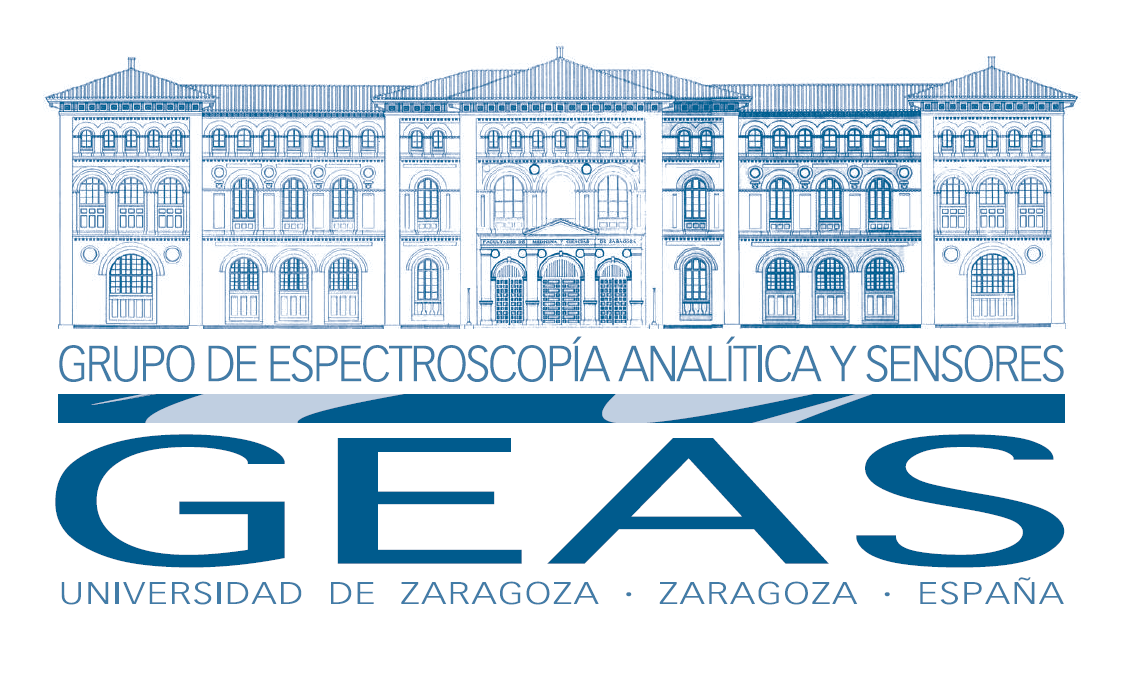
GEAS Research Lines
Our lines of research
,The research lines of the GEAS group correspond to the following three lines of work:
I. Analytical Nanometrology.
The research, development and application of new techniques, methods and analytical platforms for the detection, characterization, and quantification of both synthetic and natural nanomaterials in consumer products, the environment and biological systems, and individual particle and cell detection techniques.
II. (Bio) Electrochemical and optical analytical sensors.
The design, development, and application of catalytic (enzymes) and affinity (antibodies, aptamers) (bio)sensors for the determination in situ of contaminants, clinical parameters, and other parameters of interest in the field of environment, food safety, and biochemistry clinics.
III. Characterization of heritage materials.
Non-destructive instrumental techniques for the best knowledge and preservation of the artistic and historical heritage, with special emphasis on the study of ceramics, pigments and organic wastes.
GEAS
Analytical Nanometrology
Research and Development of new analytical techniques and methodologies for the characterization of artificial nanomaterials and nanoparticles in consumer products and strategic materials. Characterization of nanoparticles of Ag, Au, Co, Fe, SiO2, CeO2, metal oxides, etc.
Nanotechnology and analytical environmental nanoscience.
Multielemental chemical and functional speciation in natural nanomaterials of importance in ecosystems: NOM, colloids, phytoplankton, biocolloids, … etc. Application of techniques of Single Particle Analysis, Single Cell Analysis, dynamic radiation scattering, hydrodynamic chromatography and ultrafiltration techniques and AFFF (assymetric flow field fraction) for the separation of nanoparticles from Single Particle Analysis and Single Cell Analysis.
GEAS
Analytical spectroscopic and electrochemical sensors
Design and development of new catalytic (enzymatic) and affinity (antibodies, aptamers) biosensors, for the in situ quantification of endogenous clinical parameters, toxic organic molecules, contaminants, and other parameters of interest.
Electrochemical sensors for the detection and quantification of metallic nanoparticles. Electrochemical characterization of modified surfaces. Nanostructured analytical biosensors.
Applications of these (bio) sensors in the field of clinical biochemistry, environment and food safety.
GEAS
Characterization of strategic materials using non-destructive instrumental methods
Application of non-destructive instrumental techniques for the best knowledge of the artistic, monumental and natural heritage. Study of new materials.
Application of scanning electron microscopy (SEM), transmission (TEM) and field emission scanning (FESEM) techniques to the study of biological systems, materials, and nanomaterials of interest
Latest GEAS news
ACCESS Program of the European Union
At the end of April, the ANTIB-PLAST consortium training request to the aCCeSS Interreg program of the EU was presented with the coordination of Prof. Juan R Castillo from the GEAS group and with researchers from the Public University of Navarra, University of La...
The first IberusTalent Call for 19 pre-doctoral contracts is open (deadline January 31, 2019)
The IberusTalent call has been opened to hire 19 pre-doctoral researchers in the Research Lines that were recently approved by the Campus Iberus Consortium on October 22, 2018, within the first call for expressions of interest. The IberusTalent project is funded in...
The GEAS group will organize the International Congress on Analytical Nanoscience and Nanotechnology (IX NyNA) in 2019
Zaragoza will be, for the second time, in charge of hosting the IX International Congress on Analytical Nanoscience and Nanotechnology (IX NyNA 2019). It is an International Congress on Analytical Nanoscience and Nanotechnology, held every two years in Spain, which...




